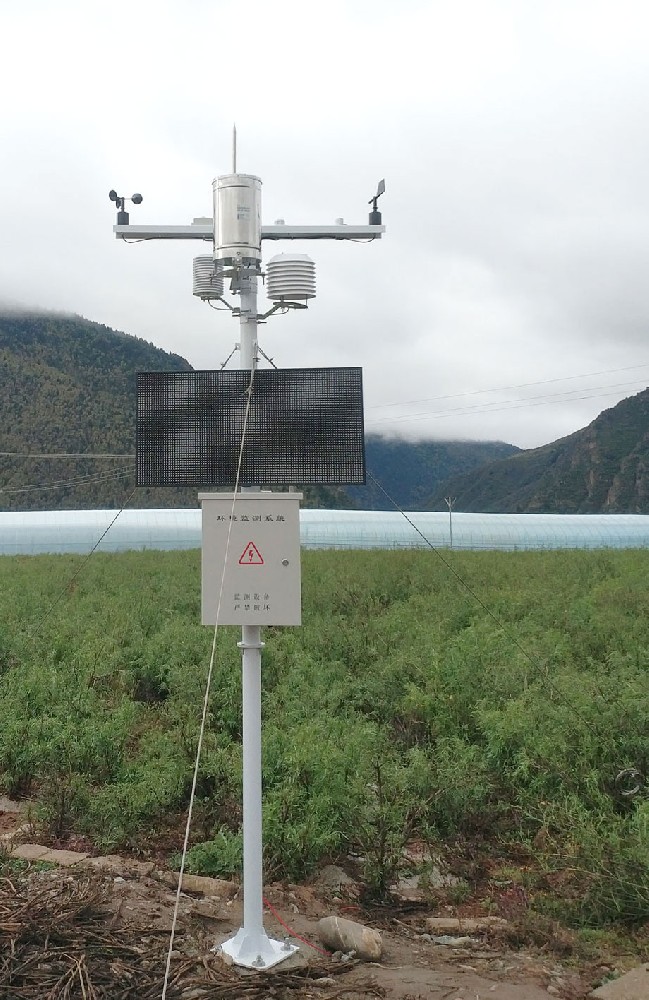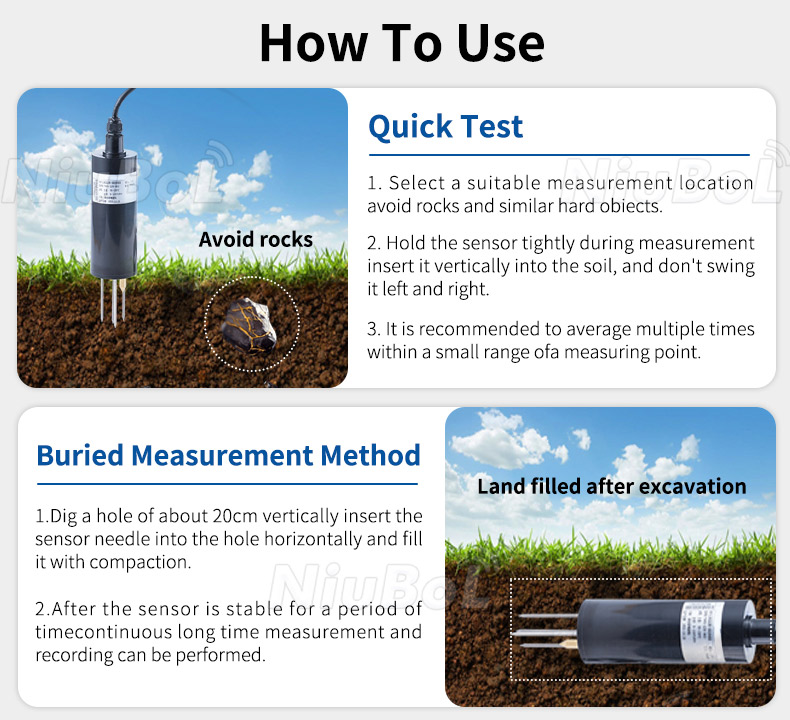

— Blogs —
—Products—
 Consumer hotline +8618073152920
Consumer hotline +8618073152920 WhatsApp:+8615367865107
Address:Room 102, District D, Houhu Industrial Park, Yuelu District, Changsha City, Hunan Province, China
Product knowledge
Time:2025-10-25 10:21:57 Popularity:266
As global population growth and climate change bring pressure on arable land, agricultural production efficiency and sustainability have become central issues. Digital agriculture sensors, as the nervous system of modern agriculture, provide scientific decision-making basis for farm management by real-time monitoring of soil, weather, and crop growth status. These small devices are moving from research labs to every field, driving agricultural production from experience-based management to data-driven decision-making.
From traditional mechanical measurement tools to modern multi-parameter intelligent sensors, technological advancements have continuously improved sensor accuracy, accelerated response speeds, and supported wireless transmission and edge computing, making agricultural management more intelligent and efficient. Farmers can access multi-dimensional information such as soil moisture, temperature, light, wind speed, and wind direction in real-time via mobile phones or PCs, automatically adjusting irrigation and fertilization plans to increase yields and reduce resource waste.

Early soil sensors were mainly resistance-based, low-cost but prone to corrosion. Modern capacitive and TDR (Time Domain Reflectometry) sensors achieve accuracy of ±2%, enabling long-term monitoring. Soil sensors can collect data on moisture, temperature, pH value, salinity concentration, etc., providing basis for irrigation and fertilization decisions. By integrating with automated irrigation systems, water consumption can be reduced by 20–30%, and crop yields increased by approximately 10–15%.
Weather sensors are used to measure data such as temperature, humidity, wind speed, wind direction, rainfall, and solar radiation. Modern weather stations can integrate multi-parameter sensors, supporting remote monitoring and cloud-based data analysis. Precise weather information helps farmers timely prevent extreme weather risks and optimize planting and fertilization plans, thereby reducing crop losses.
Crop Health Monitoring Sensors
Spectral imaging and NDVI (Normalized Difference Vegetation Index) sensors can monitor crop growth status and detect early signs of water deficiency, nutrient deficiency, or pests and diseases. When combined with AI models, this data can automatically generate recommendations for fertilization, irrigation, and pesticide use, achieving precision management, reducing pesticide usage by about 15–20%, and improving soil health.
Smart irrigation systems rely on real-time data from sensors to automatically control pumps and valves, achieving precise allocation of irrigation water. Modern systems typically include:
- Soil Moisture Monitoring: Dynamically adjust irrigation strategies by real-time monitoring of root zone moisture.
- Weather Data Linkage: Combine rainfall and evapotranspiration predictions to avoid over-irrigation.
- AI Analysis and Prediction: Machine learning models predict crop water needs, improving water resource utilization efficiency.
Through smart irrigation systems, farmers can save 20–35% of water resources while reducing fertilizer runoff, making significant contributions to environmental protection and agricultural sustainability.
The vast amount of data generated by agricultural sensors needs to be systematically analyzed to be transformed into actionable management strategies. The typical process includes:
- Data Collection: Sensors gather soil, weather, and crop data.
- Cloud Storage: Data is centrally managed via IoT platforms or agricultural cloud storage, ensuring security and traceability.
- AI/ML Analysis: Machine learning models process data to predict water needs, pest and disease risks, and optimal fertilization times.
- Visualization and Decision-Making: Farmers can intuitively view data and recommendations through dashboards or mobile apps.
This data-driven model not only improves agricultural production efficiency but also provides scientific basis for agricultural insurance, financial credit, and policy formulation.

Sensor technology directly supports sustainable agriculture goals:
- Water Resource Savings: Precision irrigation reduces unnecessary water consumption.
- Reduction in Pesticide and Fertilizer Use: Scientific application and fertilization through monitoring crop health and soil conditions.
- Improvement of Soil and Ecological Environment: Reduces chemical substances flowing into groundwater and soil, enhancing long-term soil productivity.
- Support for Food Security Policies: Governments can optimize regional irrigation planning based on sensor data, improving grain yield stability.
- Greenhouse Agriculture: High-precision sensors control the environment to ensure optimal crop growth conditions.
- Open Fields: Combined with wireless sensor networks for large-scale intelligent monitoring.
- Forestry and Pastureland: Monitor soil moisture and weather conditions to optimize forest irrigation and pasture yields.
- Smart Farms and Research Institutions: Data supports scientific decision-making and new technology validation.
The global digital agriculture market is growing rapidly, with North America, Europe, and the Asia-Pacific region actively promoting smart agriculture technologies. The CAGR is expected to maintain 12–15% over the next five years, indicating that agricultural digital transformation is becoming a mainstream trend.
Modern agricultural sensor technologies emphasize interoperability and data integration:
- Support for multiple communication protocols: Modbus, LoRa, NB-IoT, 4G, Wi-Fi.
- Standardized data interfaces facilitate docking with cloud platforms or systems.
- Edge computing devices enable local data preprocessing, reducing latency and improving data reliability.
- Open APIs and modular designs facilitate integration with smart farm platforms, achieving end-to-end digital management.
Sensor investments not only increase yields but also optimize resource use:
- Cost Savings: 15–35% reduction in water, electricity, fertilizer, and pesticide use.
- Yield Improvement: Precision management can increase crop yields by 10–20%.
- Short ROI Cycle: According to industry data, the investment recovery period for sensor systems is typically within 1–2 years.
- Policy Subsidy Support: The EU, US, China, and others have digital agriculture subsidy programs, lowering the initial investment threshold.

A: Choose based on crop type, soil characteristics, irrigation method, and budget. For high-precision needs, opt for capacitive or TDR sensors; for greenhouses or research, select multi-parameter integrated sensors.
A: Wireless sensor batteries typically last 1–3 years, with regular calibration and cleaning sufficient. Overall maintenance costs account for about 5–10% of annual total costs.
A: Use Arduino or low-cost wireless modules, combined with cloud services and government subsidies, to keep first-year investment at around 500–1000 yuan per mu.
A: Modern sensors support API interfaces, allowing direct integration with smart irrigation systems or farm management platforms for automated control and visualized decision-making.
A: Typically within 1–2 years, varying by crop type, water resource costs, and system coverage area.
NiuBoL is committed to agricultural IoT and digital solutions, providing full-chain services from sensor selection and deployment to data analysis. Our IoT Suite supports multi-parameter sensors for soil moisture, weather, and crop health monitoring, compatible with mainstream smart farm platforms to achieve precision irrigation, crop management, and resource optimization.
Take Action Now: Visit the NiuBoL official website and schedule an expert consultation to smoothly transition from traditional agriculture to smart agriculture.
Sensors are the core engine of digital agriculture transformation, achieving precision agriculture, resource savings, and yield improvements through multi-dimensional data collection, intelligent analysis, and automated management. With continuous technological iterations, the integration of edge computing, AI prediction, and cloud platforms will further drive agricultural efficiency and sustainability. Farmers, enterprises, and policymakers can all leverage sensors for scientific decision-making, contributing to global food security and environmental protection.
Prev:Market Forecast: Demand for Soil Moisture Sensors 2025–2030
Next:How IoT Agriculture Sensors Are Shaping Food Security Policies
Related recommendations
Sensors & Weather Stations Catalog
Agriculture Sensors and Weather Stations Catalog-NiuBoL.pdf
Weather Stations Catalog-NiuBoL.pdf
Related products
 Combined air temperature and relative humidity sensor
Combined air temperature and relative humidity sensor Soil Moisture Temperature sensor for irrigation
Soil Moisture Temperature sensor for irrigation Soil pH sensor RS485 soil Testing instrument soil ph meter for agriculture
Soil pH sensor RS485 soil Testing instrument soil ph meter for agriculture Wind Speed sensor Output Modbus/RS485/Analog/0-5V/4-20mA
Wind Speed sensor Output Modbus/RS485/Analog/0-5V/4-20mA Tipping bucket rain gauge for weather monitoring auto rainfall sensor RS485/Outdoor/stainless steel
Tipping bucket rain gauge for weather monitoring auto rainfall sensor RS485/Outdoor/stainless steel Pyranometer Solar Radiation Sensor 4-20mA/RS485
Pyranometer Solar Radiation Sensor 4-20mA/RS485
Screenshot, WhatsApp to identify the QR code
WhatsApp number:+8615367865107
(Click on WhatsApp to copy and add friends)
